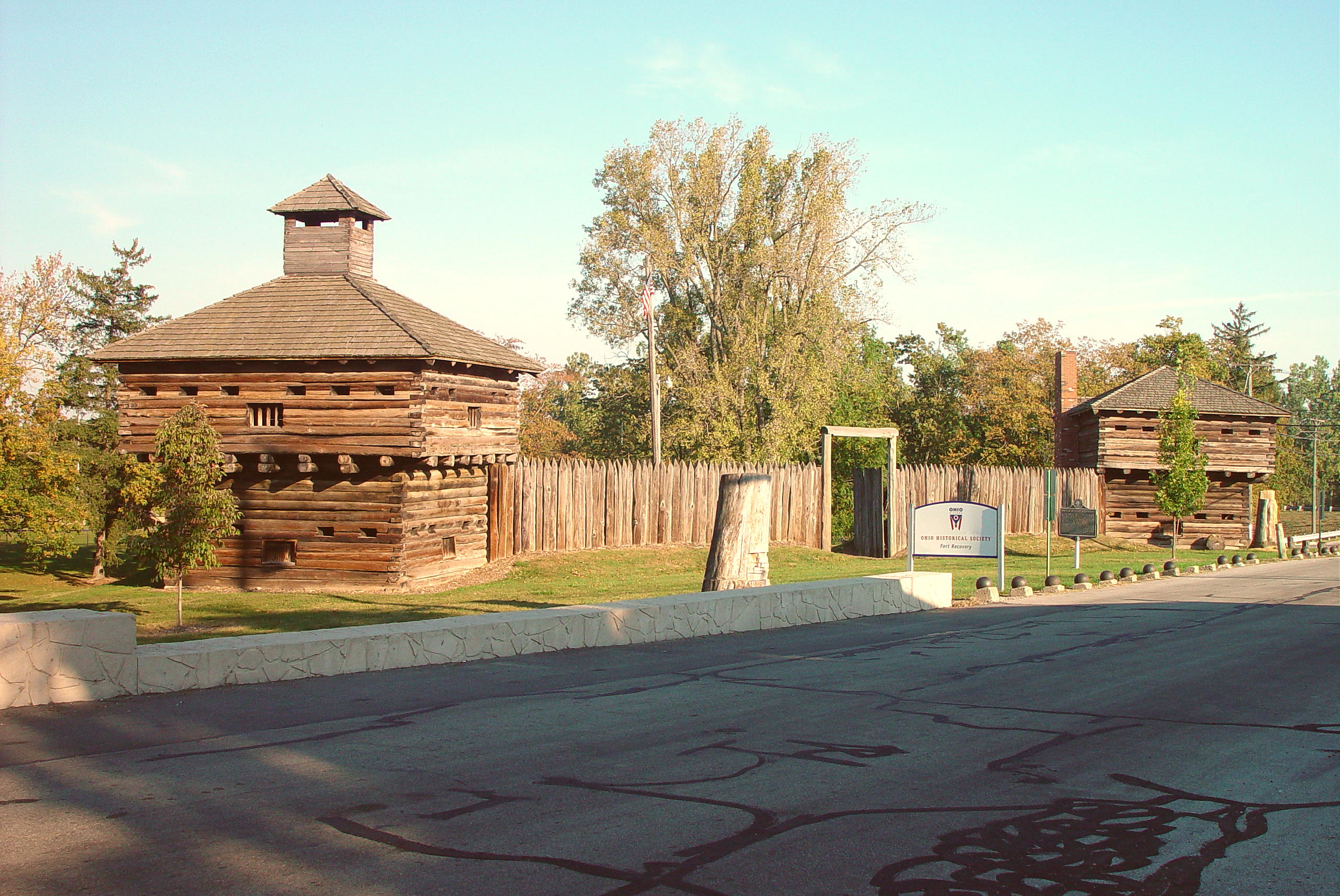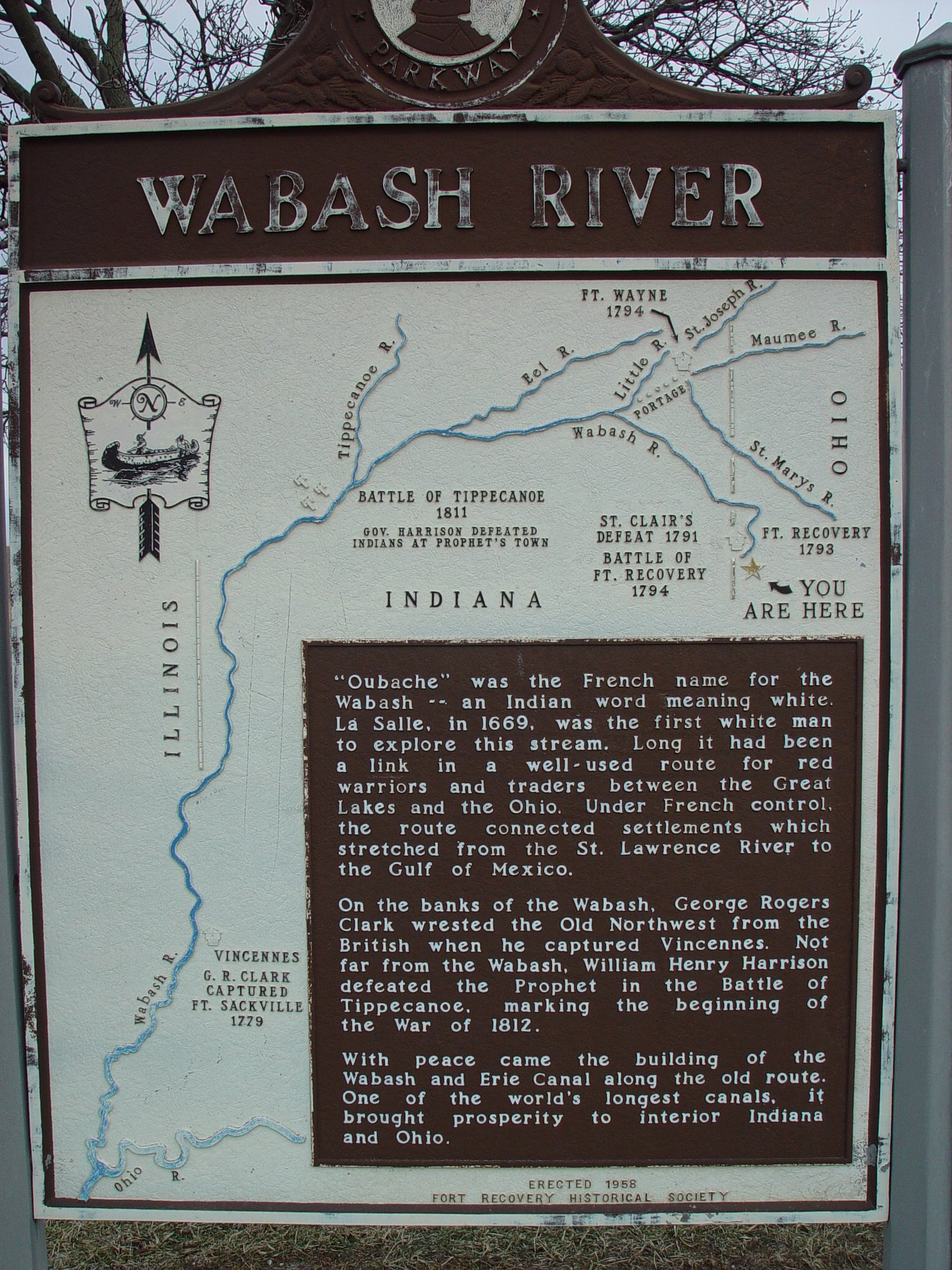About Fort Recovery
Fort Recovery, Ohio, is a little village located in West Central Ohio. It is built on the site of St. Clair's Defeat in 1791 and Wayne's Victory in 1794. The current population is around 1400 residents. In addition to its historical significance, Fort Recovery boasts an excellent school system, business, and industry, & proud religious heritage. For more information on the village of Fort Recovery, click here.
Fort Recovery is the site of two of the largest Indian battles ever fought in the United States. Little Turtle, Miami's war chief, was responsible for organizing the Native Americans in both battles.
Major General Arthur St. Clair led the American army in 1791. The first battle, sometimes entitled St. Clair's Defeat, occurred on November 4, 1791, on the banks of the Wabash River. St. Clair's Defeat was the worst defeat of the American army on American soil in the history of the United States. Over 900 soldiers died.
Major General Anthony Wayne would not allow a repeat of the first battle. The second battle, Wayne's Victory, took place on June 30-July 1, 1794 at the Fort Wayne's legion built in December 1793, named Fort Recovery. The battle finally destroyed the largest Indian confederation ever organized and led to the eventual settlement of the Northwest Territory and statehood for Ohio in 1803.
Fort Recovery State Museum
Built in 1938 by the Works Progress Administration, the museum building first housed the local library and numerous artifacts from the local area. In the 1970s it became the Fort Recovery State Museum. The museum features Anthony Wayne's legionnaires and a typical Native American from the 1790s. Life-size mannequins show an officer & artilleryman operating a Howitzer cannon (left), an infantryman making use of the stockade, and a dragoon complete with his horse. Information and maps explain both the Harmar and St. Clair campaigns along with a detailed explanation of Wayne's campaign and the construction of the fort. The original flagstaff from the fort as well as many artifacts from the 1790 campaigns is proudly displayed. Fort Recovery was a pivotal point on the Greenville Treaty Line. A print of the signing of the treaty is shown along with the original stake used to mark the treaty line. Portraits of the battles as depicted by historian and author Robert VanTrees and portraits of Wayne, St. Clair, Little Turtle, Blue Jacket, and Buckongahelas adorn the walls. Visit the balcony to see a large display of prehistoric artifacts found in the local area. Artifacts date back to 14,000 years B.C. Available in the gift shop are books, maps, postcards and other items relevant to Fort Recovery along with other souvenirs.
Fort Recovery Historical Society
The Fort Recovery Historical Society was established in 1946. Their mission statement is "Remembering the past and promoting the future." Since their beginning, the FRHS has actively promoted Fort Recovery's rich history and proud heritage. They are a very respected organization in the community and contribute much time and effort to preserving Fort Recovery's historic past. Currently, the Fort Recovery Historical Society manages the museum, blacksmith shop, and log cabin. In 2002, the mayor of Fort Recovery honored the Historical Society with the Outstanding Community Service Award. They are the second organization to receive this great honor. If you are interested in joining the FRHS or want more information on the projects of the historical society please contact us.




